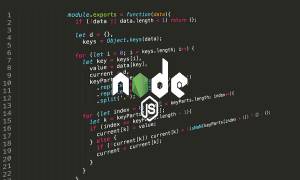How SaaS LMS Solutions Are Transforming Education
![How SaaS LMS Solutions Are Transforming Education [node:title]](/sites/default/files/styles/large/public/Future%20of%20Education%20is%20saas.jpeg?itok=ooRR8Er7)
Education is becoming drastically different from what it was in the past due to the use of technology and the evolving requirements of individuals and learning facilities.
The SaaS Learning Management Systems (LMS) Market is now leading this change, acting as a catalyst for a new age in the educational sector. SaaS LMS present a completely new approach to delivering education and educational material.
In this post, we explore what SaaS LMS is, how SaaS LMS solutions are changing the education industry, and the positive impacts that comes with embracing this tech.
What is SaaS LMS?
Definition and Explanation
A SaaS LMS is simply an online tool that provides educators and learning institutions various tools and functions to design, build, and manage online courses and digital content.
As opposed to conventional on-premise LMS platforms that are located within an organization’s network, SaaS LMS is supplied and managed by a service provider who handles its upgrading, expansion, and availability through an internet connection.
A SaaS LMS is, thus, a type of LMS that is hosted on the cloud and accessed through the internet, which makes it a software-as-a-service (SaaS) tool. This means that it is not installed and run on its own computers or local server but it is hosted and managed by a third party.
SaaS LMS is a cutting-edge technology that can transform industries, and it’s important to understand and appreciate the importance of leveraging it.
Key Features of SaaS LMS Solutions
An LMS platform and its functions can be accessed via a browser or certain applications without the need of operational installations or technical maintenance.
SaaS LMS solutions typically offer a wide range of features and functionalities, including:
- Course creation and management tools
- Interactive and multimedia content delivery
- Assessment and grading capabilities
- Learner tracking and progress monitoring
- Communication and collaboration tools (forums, messaging, etc.)
- Reporting and analytics
- Mobile Accessibility
Benefits of Integrating SaaS LMS solutions
The integration of technology, specifically SaaS LMS solutions, into educational practices offers numerous benefits, including:
- Increased accessibility and flexibility for learners
- Personalized and adaptive learning experiences
- Enhanced collaboration and communication
- Cost-effective and scalable solutions
- Data-driven insights and analytics for continuous improvement
Key Ways SaaS LMS Enhance Learning
Some of the benefits of SaaS LMS and key ways it enhances learning include:
1. Personalized Learning Experiences
SaaS LMS solutions are advantageous in that they can create personalized learning environments due to the various features they offer.
Features such as differentiated instruction of students, dynamic assessment, and use of individualized feedback can be used to improve student engagement, motivation, and learning.
SaaS LMS can also tailor learning content and provide teaching options depending on the learning capacity and interests of different learners and the progression of the learning process, facilitating individualized, effective, and inclusive learning experiences.
2. Enhanced Accessibility and Flexibility
SaaS LMS solutions are unique and perhaps the most convenient for learners. Their cloud-based delivery model of courses means students can learn from any place with an internet connection and use any computing device, including a laptop, tablet, and smartphone.
For students, SaaS LMS means flexibility and customization, opening a world of opportunities for them. Since the materials used in the course are accessible anytime and anywhere over the internet, learners can easily adjust their schedules to meet course requirements.
Flexible pathways, formative and diagnostic tools, and differentiated and responsive feedback impact student interest, participation, and achievement. This, coupled with the fact that SaaS LMS content delivery methods are usually very creative, unique, and engaging, including video lessons and virtual reality presentations, keeps the students engaged and fully involved.
This enhanced engagement, accessibility, and flexibility when using SaaS LMS bolsters independent learning, enabling learners to study whenever they have time and in their preferred medium of learning, which in turn increases learning participation and achievement.
3. Interactive and Engaging Content Delivery
As already mentioned, today’s SaaS LMS platforms utilize interactive digital content and modular delivery solutions and techniques like recorded webinars, gaming features, and flipped classroom models. Such content models can help engage students more, make them interested and quite involved, and even help devise rather captivating educational processes.
Current SaaS LMS trends and innovations also include AI integration to facilitate differentiated instructional delivery, VR/AR for experiential learning, and learning analytics for evidence-based decision-making, which all improve knowledge acquisition and application.
Benefits of SaaS LMS for Educators
For educators, some of the key benefits of integrating SaaS LMS for learning include:
1. Streamlined Administrative Tasks
SaaS LMS solutions help educators free up their valuable time by ensuring they don’t have to manually carry out numerous administrative procedures. Tools such as auto-grading, attendance tracking, as well as tools for organizing courses make the work of instructors easier or enables them to spend more time delivering quality content and interacting with the students.
2. Data-Driven Insights and Analytics
Another advantage that SaaS LMS platforms have is a sophisticated system of data analytics, which might be helpful to educators in concluding students’ activity and outcomes.
By adopting learning recommendations based on data gathered from the classroom, it is possible to improve curriculum delivery, student assessment, and even to make subsequent evidence-based decisions necessary to enhance learners’ educational achievement.
3. Improved Communication and Collaboration
Management and interaction of students and teachers form the basis of every successful learning process. SaaS LMS include collaborative features like discussion forums, chat messages, and document-sharing for teachers, students, and other school users. This improves relations and builds a healthy learning environment where all participants are actively involved.
Through multimedia content presentation, assessment, and monitoring or evaluation of data analysis, SaaS LMS software also expedites administrative processes, policy formulation, and provides educators with vital information that can help them enhance the learning process and refine teaching strategies and methodologies.
Best Practices for Implementing SaaS LMS
Some best practices to keep in mind when implementing SaaS LMS include:
1. Planning and Preparation
Implementation of SaaS LMS solution should be well-planned, and you should also be prepared adequately for integration of the solution in education.
Key steps to adopt when planning and preparing for SaaS LMS integration include:
- Establishing specific goals and objectives,
- Identifying the prevailing needs,
- Mobilizing all the stakeholders (educators, learners, managers), and
- Mapping out an overall strategic plan for the implementation of the changes.
2. Training and Support for Educators and Students
Hiring and training staff, setting up a proper working environment, and offering support is another essential factor when implementing and migrating to a SaaS LMS platform.
Every effort should be made to provide professional, specific, and targeted training for users to understand how features of the LMS platform work in promoting teaching and learning, as well as how online learning can be integrated, the available support resources for users, and more.
In Conclusion
SaaS LMS solutions are revolutionizing the education sector. The solutions are giving people an opportunity to have higher quality education, while making the learning process more enjoyable and productive for learners of all ages and backgrounds.
Through the integration of these progressive technologies educators and students can begin a radical transition to a new future in education characterized by effective, individualized, and inclusive learning experiences.







![[node:title]](/sites/default/files/styles/front_featured__front_/public/web-hosting-reviews.jpg?itok=cBjP3BNS)



























